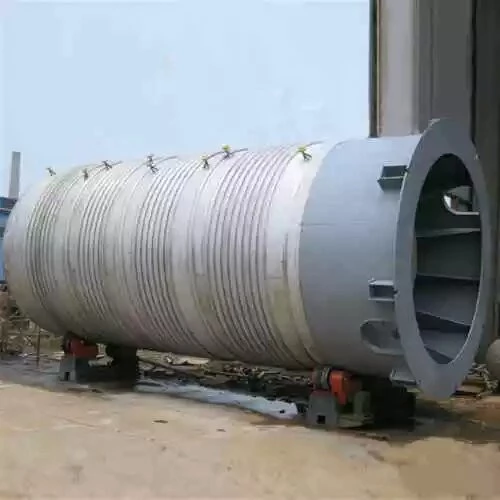Non-Destructive Testing in Pressure Vessel Production (Part One)

In the contemporary era marked by technological strides, the evolving landscape of industry places heightened emphasis on product safety, quality assurance, and optimal performance. Within this paradigm, the utilization of non-destructive testing (NDT) technology emerges as a cornerstone, wielded strategically in both the manufacturing and deployment phases of pressure vessel products. In the following paragraphs, the common Non-Destructive methods for Pressure Vessel will be discussed.
Common Non-Destructive Testing Methods for Pressure Vessels
1. The Radiographic Inspection
- Defining Radiographic Inspections: A nuanced breakdown as per the American Society for Testing Materials, encompassing radiographic testing, real-time imaging detection, chromatographic detection, and other radiographic detection techniques.
- Radiography in Action: Penetrating test pieces with X-ray or γ-ray, detecting defects through variations in ray absorption, and capturing crucial information using film.
- Diverse Equipment Arsenal: The comprehensive suite includes X-ray inspection machines, high-energy radiation detection devices, and gamma-ray inspection machines.
Its Characteristic Features
- It offers an intuitive defect image with precise positioning.
- The method Facilitates direct and enduring recordability of test results.
- The test exhibits a high detection rate for volumetric defects, albeit potential challenges in area-type defect inspection.
- It finds aptitude in inspecting butt welds but poses limitations for fillet weld scrutiny on plates, bars, forgings, and similar structures.
2. Ultrasonic Testing
- Application Spectrum: Predominantly employed for detecting internal buried defects in butt welds, internal cracks in pressure vessel welds, and identifying cracks in pressure vessel forgings and high-pressure bolts.
- Methodological Diversity: Encompasses pulse reflection method, penetration method, and resonance method based on echoes, shadows, and standing waves, respectively.
Its Characteristic Insights
- Boasts a high detection rate for area-type defects but exhibits a relatively lower rate for volumetric defects.
- Demonstrates versatility across workpieces with substantial thickness.
- Applicable across a spectrum of test pieces, including butt welds, fillet welds, T-shaped welds, plates, pipes, bars, forgings, and composite materials.
- Offers cost-effective inspection, swift processing, and portable equipment for on-site utility.
- Presents challenges in obtaining a visual defect image, intricate positioning, and moderate quantitative accuracy.
- Lacks a direct record of test results, emphasizing reliance on real-time interpretation.
3. Magnetic Particle Testing in Focus
- Underlying Principle: Rooted in displaying surface and near-surface defects of ferromagnetic materials, hinging on the interaction between the magnetic leakage field at the defect and magnetic powder.
- Probing the Process: Initiates with the magnetization of ferromagnetic material, generating a potent magnetic induction intensity, where defects induce magnetic field line distortions, creating a magnetic leakage field.
The Distinctive Characteristics
- Apt for detecting ferromagnetic materials, yet unsuitable for non-ferromagnetic counterparts.
- Proficient in identifying surface and near-surface defects, but not geared for internal defect scrutiny.
- Exemplifies high detection sensitivity for minute cracks and defects.
- Stands out for its cost-effectiveness and expeditious processing.
- Contingent on the shape and size of the workpiece, occasionally posing challenges in magnetization and detection logistics.

